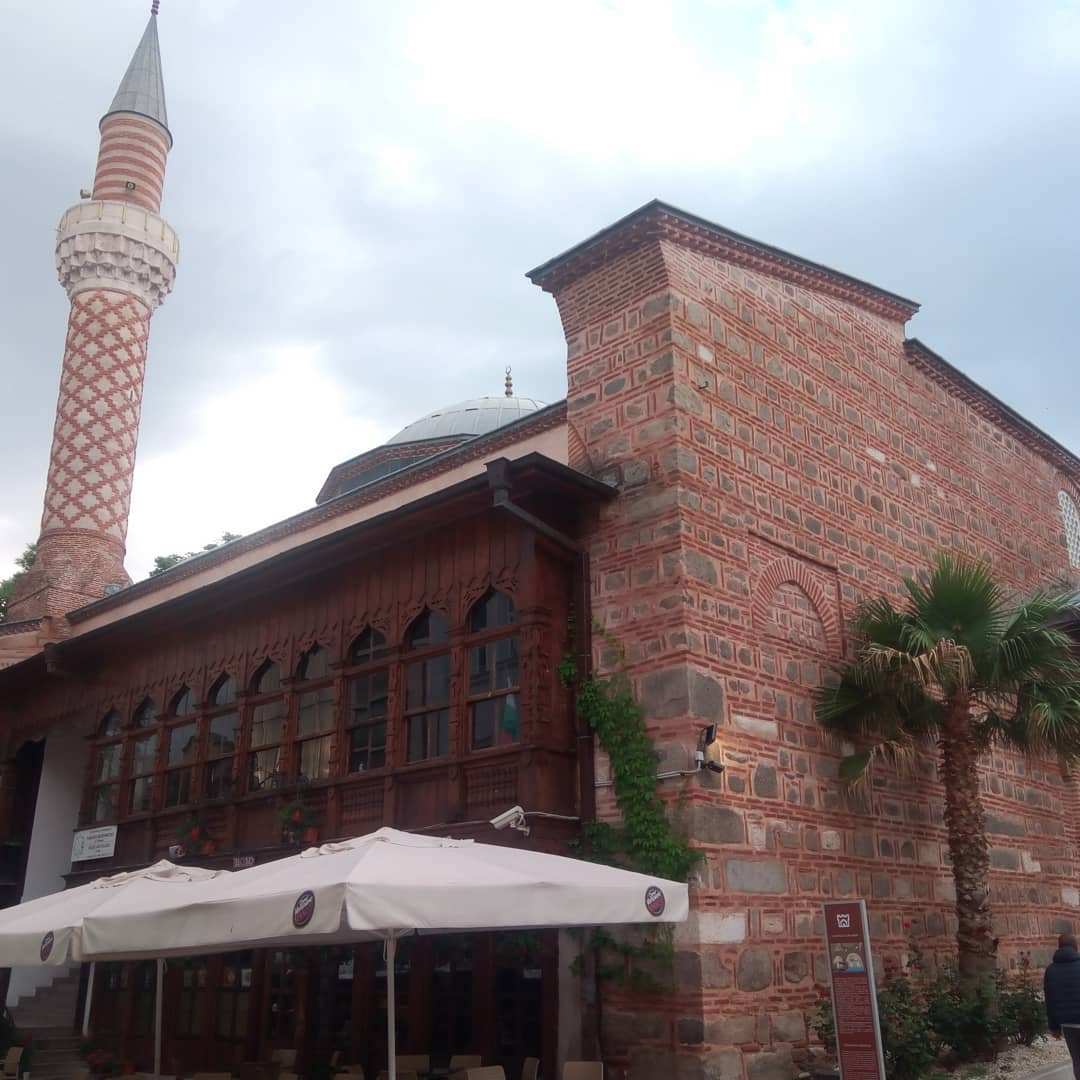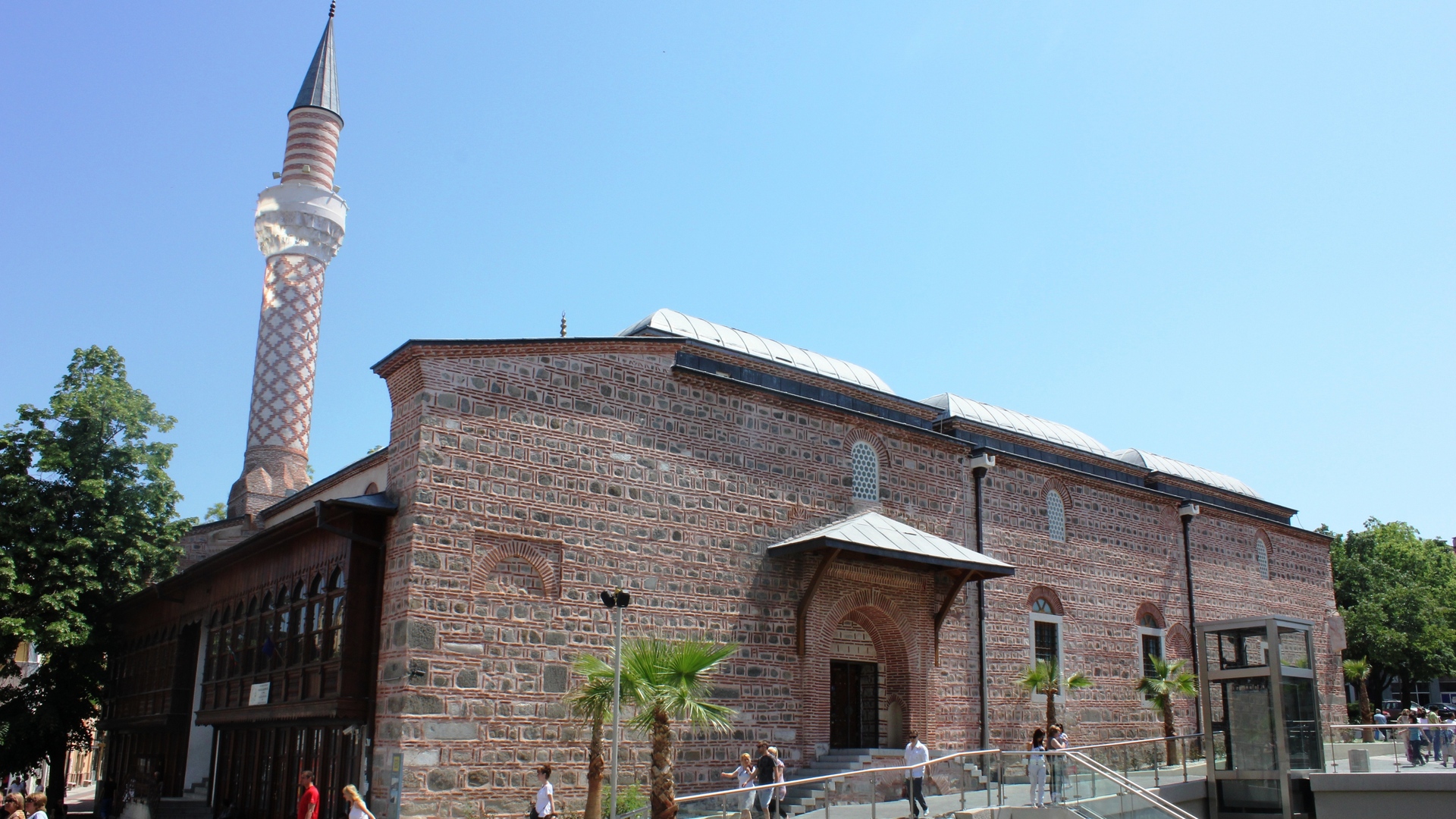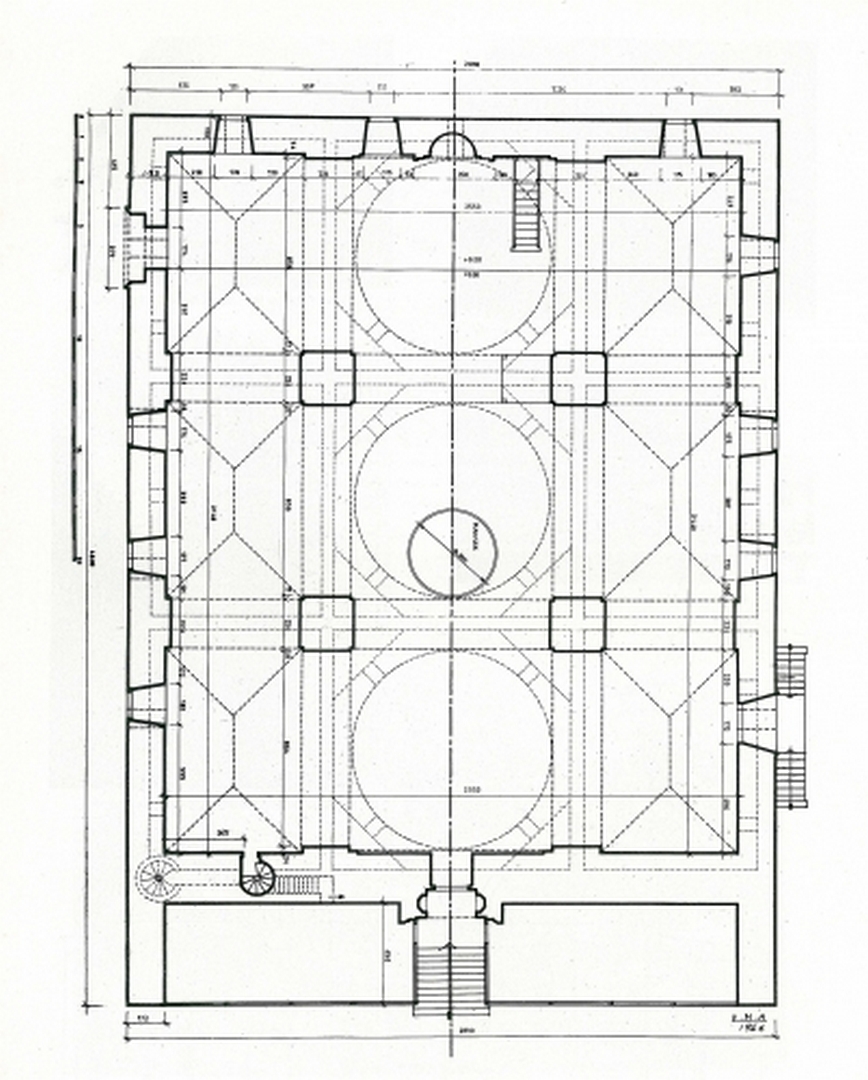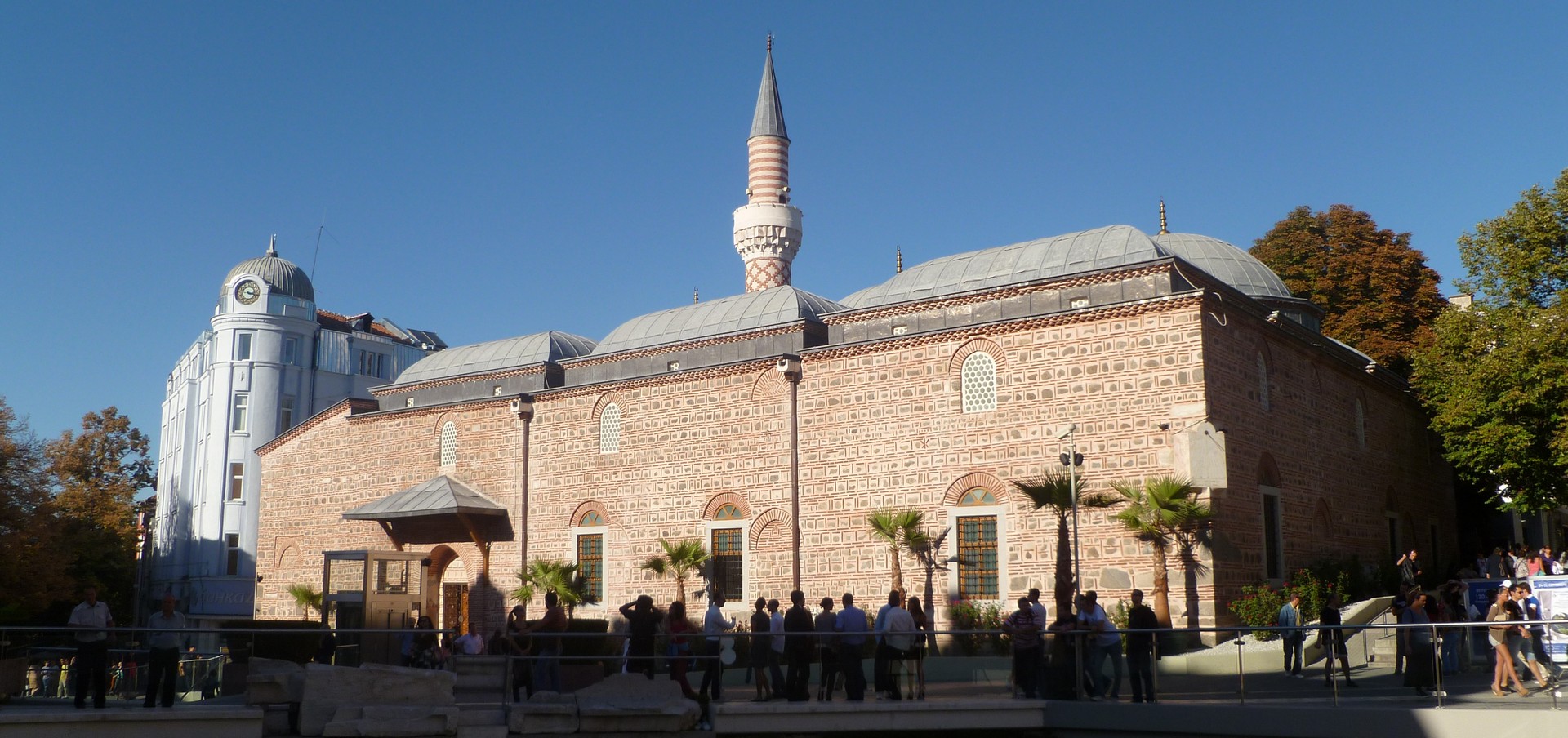Description
Property Name: Hudavendigar Mosque
Inventory No: 359-32-1
Date of infill of the inventory form: 2010-01-12
Country (State party): Bulgaria
Province: Plovdiv
Town:
Geographic coordinates: 42° 8′ 52.12″ N
24° 44′ 53.85″ E
Historic Period: 14th century, 2nd half
Year of Construction: 1363-4
Style: Early Ottoman
Original Use: Mosque
Current Use: Mosque
Architect: Unknown
Significance
There are a few monuments remained of what Ottomans have established in Balkans. These are presumed to be approximately 18,000 in quantity. Therefore, Hüdavendigar Mosque is considered to be one of the oldest and significant Ottoman and Islamic monuments in Balkans. The mosque, located in Plovdiv (Filibe) in Bulgaria has been established by the ruler of that era, Murad Hüdavendigar the 1st. As being an important mosque for Plovdiv, this mosque is also known as Cuma (Friday) and Ulu Mosque. It is situated on the Cuma Camii (Friday Mosque) square and at the beginning of a very important commercial line of Plovdiv. This Ottoman heritage is the first mosque to be founded after conquers of Plovdiv by Ottoman Turks. Hüdavendigar Mosque is considered to be a property among the I. Murad Waqf, according to the documents of E.H. Ayverdi. Architecturally, the mosque represents the earlier times of Ottoman architecture with rows of bricks in between stone rows on the exterior facades. This also refers to the Byzantine affects. Actually the structure has been founded over the foundations of city walls of Antiquity and partially Roman period stadium. The mosque is known to have gone under some restorations as a result of damages occurred by earthquakes.
Selection Criteria
ii. to exhibit an important interchange of human values, over a span of time or within a cultural area of the world, on developments in architecture or technology, monumental arts, town-planning or landscape design
iv. to be an outstanding example of a type of building, architectural or technological ensemble or landscape which illustrates (a) significant stage(s) in human history
vi. to be directly or tangibly associated with events or living traditions, with ideas, or with beliefs, with artistic and literary works of outstanding universal significance
State of Preservation
According to the researches of E.H. Ayverdi, the building has gone under some repairs in 1785. The building was secondly repaired in 1818; however, there are no traces of damage after the Plovdiv earthquake in 1818. There has been also an earthquake in 1928, whose intensity has been measured by 7.4. This earthquake could have caused many cracks which were interfered during the latest restoration.
There have been some excavations in 1980s. During these excavations, the Roman period stadium has been revealed; but it is presumed that meanwhile the excavations went so near to the mosque and therefore some deep cracks have occurred within the mosque’s supporting system.
The mosque was in a bad situation recently and has been restored by Istanbul Metropolitan Municipality. Before this progress, the main deterioration for the mosque has been determined as the deep cracks that occurred on the walls. Especially vertical cracks on the domes and east-west walls were numerous. Restoration progress started in 2005 and ended by September 2008. Within the restoration progress the elder lead coverings over the vaults and domes have been dismantled and these elements have been consolidated; just after new lead covering has been applied over these elements. Consolidation work has continued on the outer walls and some repair works have been done inside the mosque. Especially, the hand carvings have been observed and renewed. The mosque was inaugurated in the 5th of September, 2008 and started serving again. Presently, the mosque is used for religious purpose again.
• The renewed lead coverings over the domes and vaults during the 2005 restoration by Taş Yapı; http://www.tasyapi.com.tr
• Front view, during the minaret consolidation and front facade restoration; http://www.tasyapi.com.tr
• Back facade during restoration; http://www.tasyapi.com.tr
• During the lead renovation; http://www.tasyapi.com.tr
• Renewed hand carvings; http://www.tasyapi.com.tr
References
Ayverdi, Ekrem Hakkı. Avrupa’da Osmanlı Mimari Eserleri (Bulgaristan, Yunanistan, Arnavutluk_Vol. IV., 4,5,6 Book), İstanbul Fetih Cemiyeti Publishing, Çarşıkapı/ İstanbul, 1982 ,
Blair, Sheila S.- Bloom, Jonathan M.. The Grove Encyclopedia of Islamic Art and Architecture, Vol: 3, Oxford University Press, New York 2009,
Keskioğlu, Osman. Bulgaristan’da Müslümanlar ve İslam Eserleri, Hilal Publishing, İstanbul, 1986 ,
Memişoğlu, Hüseyin. Bulgaristan’da Türk- İslam Kültürü ve Sanatı, İstanbul Büyükşehir Belediyesi, İstanbul, March 2007 ,
Yücel, Yaşar. Macaristan ve Bulgaristan’daki Türk Sanat Eserleri,Türk Tarih Kurumu Basımevi, Ankara, 1991 ,
http://www.tasyapi.org ,





